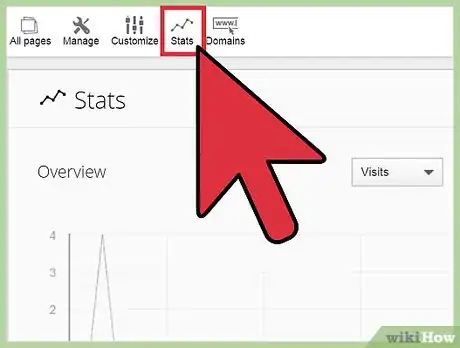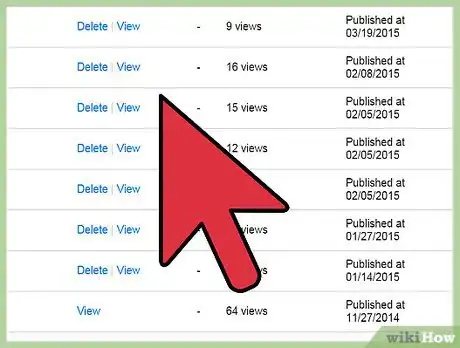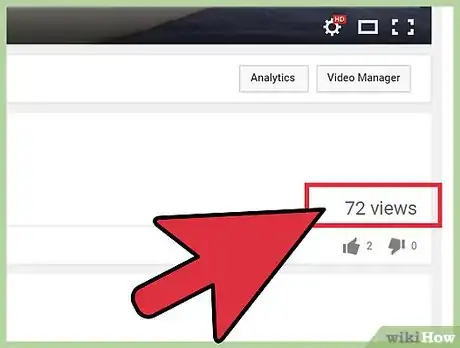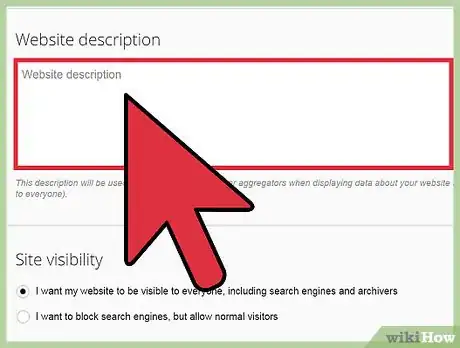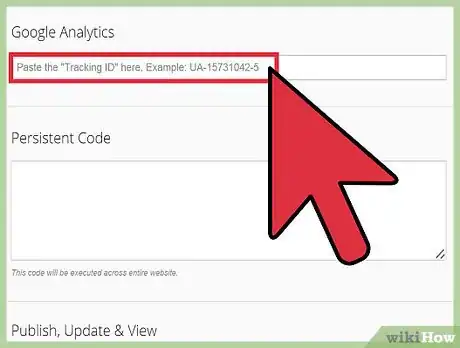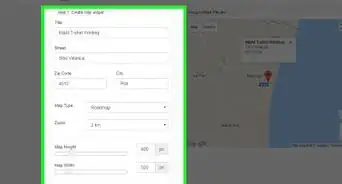This article was co-authored by Stan Kats. Stan Kats is a Professional Technologist and the COO and Chief Technologist for The STG IT Consulting Group in West Hollywood, California. Stan provides comprehensive technology solutions to businesses through managed IT services, and for individuals through his consumer service business, Stan's Tech Garage. Stan holds a BA in International Relations from The University of Southern California. He began his career working in the Fortune 500 IT world. Stan founded his companies to offer an enterprise-level of expertise for small businesses and individuals.
There are 11 references cited in this article, which can be found at the bottom of the page.
This article has been viewed 591,655 times.
Perhaps you want to monitor your own website's traffic, or keep tabs on a competitor's website. Whether you're trying to win new fans or customers, or you're just really curious about how popular your content is, there are many tools available that can help you. There are a number of methods that can be used from your own website, though some of these provide more of an estimate than a hard number. Other methods are more technical, and may exceed your needs. No matter what your professional needs are, learning how to monitor your web traffic and that of your competitors can help you ensure that your business succeeds.
Steps
Monitoring Traffic from Your Own Website
-
1Access your webpage statistics. If you're using a platform like WordPress, it's very easy to access your site's stats. These features come built into the web platform for easy tracking and maintenance, and will give you an accurate picture of your webpage's traffic.
-
2Check the number of blog post comments. One easy and free way to get a ballpark idea of how many people visit your site is to check how many people leave comments. Obviously, not everyone who visits your website will leave comments. But on average, about one in every 200 readers leaves a comment, and knowing that statistic can help you to broadly estimate your website traffic[3] .
- Go to the webpage's "comments" section.[4]
- If the page does not list the number of comments, count them manually.[5]
- Multiply the number of comments by 200 for a ballpark average of how many viewers your page has had.[6]
- Remember that this method is not 100 percent accurate. This is merely to give yourself a rough estimate, based on average percentages.[7]
Advertisement -
3Go to your homepage's video section. If you embedded YouTube or Vimeo in your website, all you need to do is go to a video and click to play it. Both YouTube and Vimeo will show how many views your video received, but only if the videos are publicly shared. If they aren't, you won't be able to see how much traffic was flowing through the site.[8] .
- Look to the lower right hand side right below the video screen, and you'll see a number. That number reflects how many visitors your video has had.[9]
- Keep in mind that the amount of views recorded doesn't necessarily correspond to actual views. That number includes people who briefly clicked on it and then left as well, but it should help you get a rough idea of your web traffic.[10]
Monitoring Traffic Using Plugins and Websites
-
1Use Google Analytics. Google Analytics is one of the most popular web traffic monitoring applications available.[11] [12] It lets you track the route each visitor took to find your site, which can help you decide how to expand your outreach.[13] [14]
- Google Analytics has free and paid premium formats.[15]
- Once you sign up for Google Analytics, you'll receive a unique tracking code. Insert that code into your pages, and Google will track when your site is visited, who visited your site, and how they found your page.[16]
- Don't forget to filter out your own page visits from the traffic tracker. Chances are you visit your website fairly often, and without removing your hits from the regular traffic, you'll get very skewed results.[17]
- You should also filter out junk traffic, which can further skew your results.[18]
-
2Try Alexa. Alexa is a web information company that gives you detailed statistics for your website. You can track visits, popularity rankings, demographics reached, web speed, and more. Alexa is not free, but the services it provides allow for fast, detailed statistics and ease of use.[19] There are a number of different plans, depending on your budget and your business's needs.[20]
-
3Track with Compete. Compete is similar to Alexa. Compete helps you track web traffic on your site from domestic (US-based) webpage visitors. It also offers a toolbar that gives you easy access to your site's statistics at any time.[23]
- Compete is not free, but the site offers a number of subscription plans. Each plan offers specific features designed to help with any level of reporting.
Tracking Competitors' Websites
-
1Identify your competition. Monitoring your own site's traffic is crucial, but if you really want to improve your webpage, you should also keep tabs on your competition. Knowing what a competitor does differently on his website, and how he reaches his audience, can help you make decisions about your own webpage in the future.[24] [25]
-
2Evaluate their websites. If your competitors are getting more web traffic, either their websites are better designed, or they are optimizing search engine queries more effectively. Compare your website with your competitors' pages, and try to learn what you can do differently to capitalize on some of their success.[28]
-
3Utilize web traffic monitoring tools. Some of the analytical websites you can use to track your own web traffic can also be used to track your competitors' websites. Compare reviews for each tracking tool, and seek out the tools that provide the most accurate and high-quality services.[29]
- Read reviews from users online, or try different tools to see for yourself which ones work best. Many paid subscription sites offer free trials, while others are free to use.
Expert Q&A
-
QuestionHow can I check my website traffic for free?
 Stan KatsStan Kats is a Professional Technologist and the COO and Chief Technologist for The STG IT Consulting Group in West Hollywood, California. Stan provides comprehensive technology solutions to businesses through managed IT services, and for individuals through his consumer service business, Stan's Tech Garage. Stan holds a BA in International Relations from The University of Southern California. He began his career working in the Fortune 500 IT world. Stan founded his companies to offer an enterprise-level of expertise for small businesses and individuals.
Stan KatsStan Kats is a Professional Technologist and the COO and Chief Technologist for The STG IT Consulting Group in West Hollywood, California. Stan provides comprehensive technology solutions to businesses through managed IT services, and for individuals through his consumer service business, Stan's Tech Garage. Stan holds a BA in International Relations from The University of Southern California. He began his career working in the Fortune 500 IT world. Stan founded his companies to offer an enterprise-level of expertise for small businesses and individuals.
Professional Technologist Google Analytics is hands-down the most popular way most people track website traffic, and it's free. It does require a little bit of learning, though!
Google Analytics is hands-down the most popular way most people track website traffic, and it's free. It does require a little bit of learning, though! -
QuestionWhat if I just want to know the total number of people coming to my site?
 Stan KatsStan Kats is a Professional Technologist and the COO and Chief Technologist for The STG IT Consulting Group in West Hollywood, California. Stan provides comprehensive technology solutions to businesses through managed IT services, and for individuals through his consumer service business, Stan's Tech Garage. Stan holds a BA in International Relations from The University of Southern California. He began his career working in the Fortune 500 IT world. Stan founded his companies to offer an enterprise-level of expertise for small businesses and individuals.
Stan KatsStan Kats is a Professional Technologist and the COO and Chief Technologist for The STG IT Consulting Group in West Hollywood, California. Stan provides comprehensive technology solutions to businesses through managed IT services, and for individuals through his consumer service business, Stan's Tech Garage. Stan holds a BA in International Relations from The University of Southern California. He began his career working in the Fortune 500 IT world. Stan founded his companies to offer an enterprise-level of expertise for small businesses and individuals.
Professional Technologist This should be in Google Analytics in their basic dashboard. That's going to be the most accurate resource.
This should be in Google Analytics in their basic dashboard. That's going to be the most accurate resource.
References
- ↑ https://wordpress.com
- ↑ https://wordpress.com
- ↑ http://www.incomediary.com/how-much-traffic-website-gets
- ↑ http://www.incomediary.com/how-much-traffic-website-gets
- ↑ http://www.incomediary.com/how-much-traffic-website-gets
- ↑ http://www.incomediary.com/how-much-traffic-website-gets
- ↑ http://www.incomediary.com/how-much-traffic-website-gets
- ↑ http://www.incomediary.com/how-much-traffic-website-gets
- ↑ http://www.incomediary.com/how-much-traffic-website-gets
- ↑ http://www.incomediary.com/how-much-traffic-website-gets
- ↑ Janet Peischel. Digital Media Expert. Expert Interview. 30 March 2021.
- ↑ https://1stwebdesigner.com/track-website-traffic/
- ↑ Stan Kats. Cybersecurity Expert. Expert Interview. 24 June 2021.
- ↑ https://www.google.com/analytics/standard/
- ↑ https://www.google.com/analytics/standard/
- ↑ https://www.google.com/analytics/web/provision?et=&authuser=#provision/SignUp/
- ↑ http://goatcloud.com/2013/10/17/very-basics-on-how-to-monitor-website-traffic/
- ↑ http://goatcloud.com/2013/10/17/very-basics-on-how-to-monitor-website-traffic/
- ↑ https://1stwebdesigner.com/track-website-traffic/
- ↑ http://www.alexa.com/plans
- ↑ http://www.alexa.com/tools
- ↑ http://www.alexa.com/tools
- ↑ https://1stwebdesigner.com/track-website-traffic/
- ↑ Janet Peischel. Digital Media Expert. Expert Interview. 30 March 2021.
- ↑ http://smallbiztrends.com/2015/06/monitor-competitor-website-traffic.html
- ↑ http://smallbiztrends.com/2015/06/monitor-competitor-website-traffic.html
- ↑ http://smallbiztrends.com/2015/06/monitor-competitor-website-traffic.html
- ↑ http://smallbiztrends.com/2015/06/monitor-competitor-website-traffic.html
- ↑ http://smallbiztrends.com/2015/06/monitor-competitor-website-traffic.html
About This Article
To check traffic on your website, look at how many blog post comments you get or how many views are recorded on your video section. You can also use outside plugins and websites, like Google Analytics, Alexa, or Compete, to monitor website traffic. If you sign up for Google Analytics’ free or paid format you’ll get a tracking code, which will let you see when your site is visited, who visited, and how they found your page. Alternatively, you can pay for an Alexa service that will let you track things like visits, popularity rankings, and web speed. To learn how to track traffic on your competitors’ websites, keep reading!
